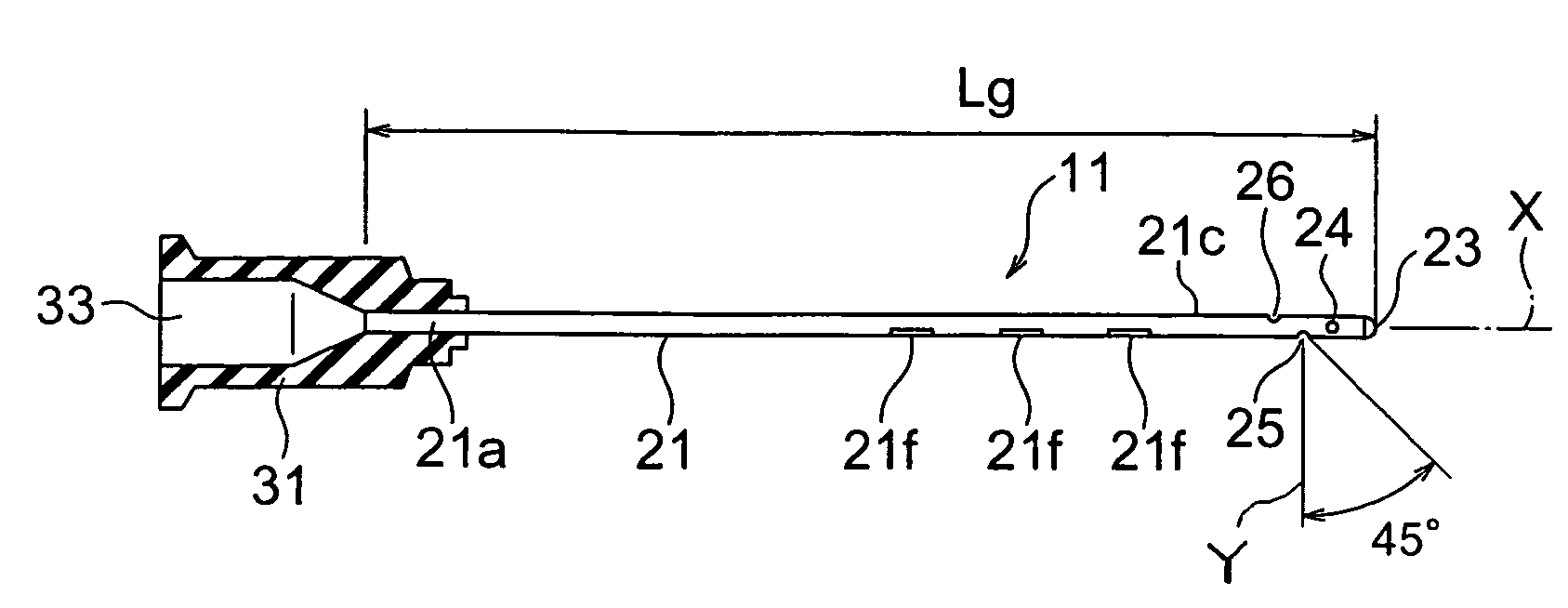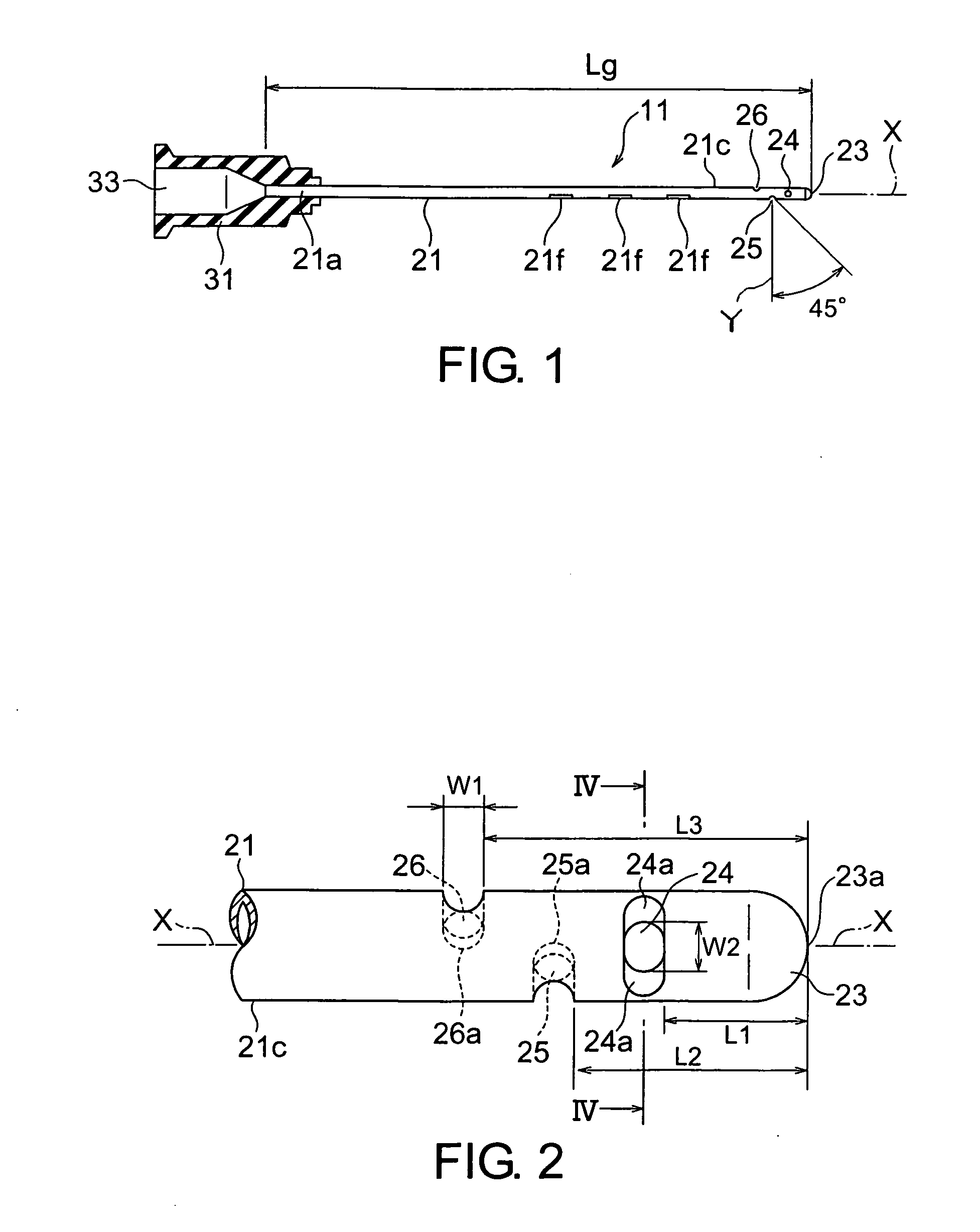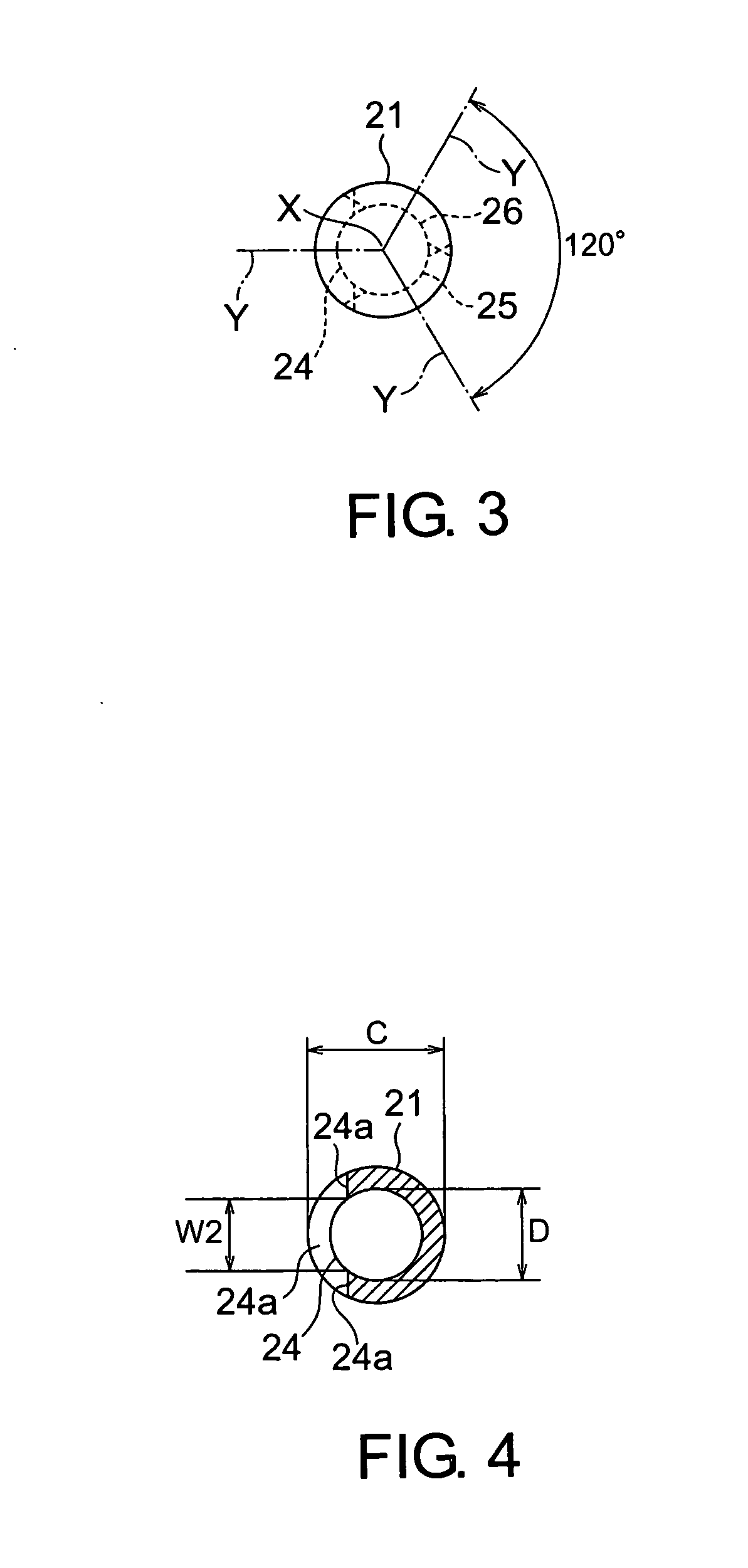Liquid injection needle element capable of jetting a liquid in a predetermined angle range and method of producing the same
- Summary
- Abstract
- Description
- Claims
- Application Information
AI Technical Summary
Benefits of technology
Problems solved by technology
Method used
Image
Examples
first embodiment
[0061] Referring to FIGS. 1 through 4, a liquid injection needle element 11 according to this invention comprises a cylindrical cannula 21 and a needle hub 31 holding the cannula 21.
[0062] The cannula 21 is made of a metal material and has a base 21a and a front part 21c opposite to the base 21a. The base 21a is supported by the needle hub 31. The front part 21c has a forward end portion 23 as a closed end. The forward end portion 23 has a semispherical outer surface. The front part 21c of the cannula 21 is provided with a first nozzle orifice 24, a second nozzle orifice 25, and a third nozzle orifice 26 formed on a lateral wall thereof.
[0063] The first through the third nozzle orifices 24, 25, and 26 are spaced from one another in a direction of a center axis X of the cannula 21. Each of the first through the third nozzle orifices 24, 25, and 26 has an orifice axis Y perpendicular to the center axis X. The first through the third nozzle orifices 24, 25, and 26 are also spaced from...
second embodiment
[0084] Referring to FIGS. 5 and 6, description will be made of a liquid injection needle element according to this invention. Similar parts are designated by like reference numerals and description thereof will be omitted.
[0085] As illustrated in the figures, the cannula 21 has only the first and the second nozzle orifices 24 and 25 without the third nozzle orifice 26. The first and the second nozzle orifices 24 and 25 are formed on the lateral wall of the cannula 21 at its front part and at positions different from each other in the direction of the center axis X of the cannula 21. The first and the second nozzle orifices 24 and 25 are spaced from each other in the circumferential direction of the lateral wall around the center axis X so that the orifice axes Y are spaced by 180 degrees from each other.
[0086] In the cannula 21 in the second embodiment, when the forward end portion 23 of the cannula 21 is directed downward, the liquid can be jetted from each of the first and the se...
third embodiment
[0087] Referring to FIGS. 7 and 8, description will be made of a liquid injection needle element according to this invention. Similar parts are designated by like reference numerals and description thereof will be omitted.
[0088] The cannula 21 has a fourth nozzle orifice 27 in addition to the first through the third nozzle orifices 24, 25, and 26 in the first embodiment. The first through the fourth nozzle orifices 24 through 27 are formed on the lateral wall of the cannula 21 at its front part 21c and at positions different from one another in the direction of the center axis X of the cannula 21. The first through the fourth nozzle orifices 24 through 27 are spaced from each other in the circumferential direction around the center axis X so that the orifice axes Y are spaced by 90 degrees from one another.
[0089] The fourth nozzle orifice 27 is same in shape as the first through the third nozzle orifices 24, 25, and 26. The fourth nozzle orifice 27 is formed at a distance L4 of 1.9...
PUM
| Property | Measurement | Unit |
|---|---|---|
| Pressure | aaaaa | aaaaa |
| Pressure | aaaaa | aaaaa |
| Angle | aaaaa | aaaaa |
Abstract
Description
Claims
Application Information
 Login to View More
Login to View More - R&D
- Intellectual Property
- Life Sciences
- Materials
- Tech Scout
- Unparalleled Data Quality
- Higher Quality Content
- 60% Fewer Hallucinations
Browse by: Latest US Patents, China's latest patents, Technical Efficacy Thesaurus, Application Domain, Technology Topic, Popular Technical Reports.
© 2025 PatSnap. All rights reserved.Legal|Privacy policy|Modern Slavery Act Transparency Statement|Sitemap|About US| Contact US: help@patsnap.com



